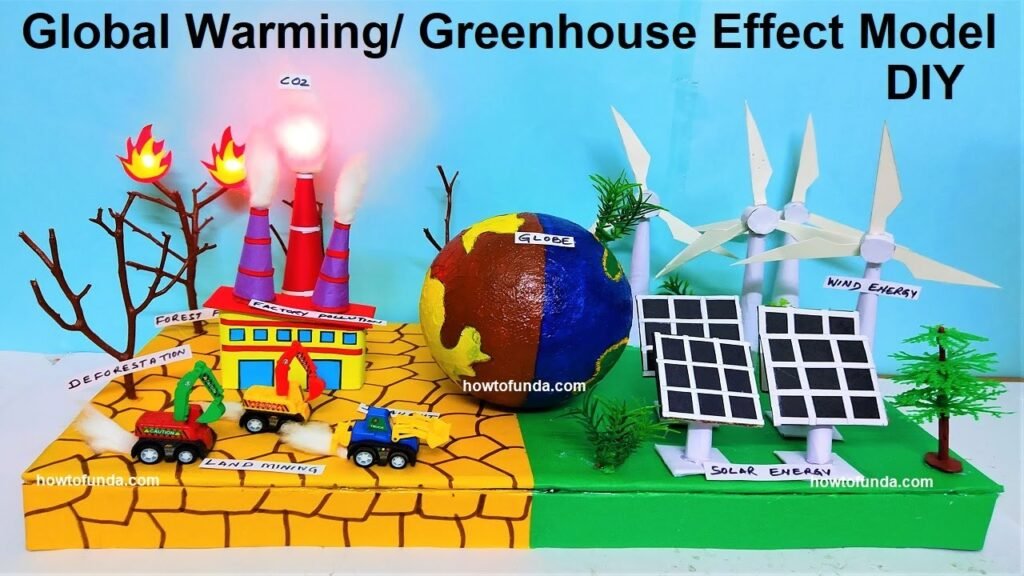Explaining and demonstrating a global warming working model at a science exhibition or fair requires breaking down the concept into simple steps.

Here’s how you can do it effectively in around 500 words:
1. Introduction
- Hook: Start with an engaging fact or question, like, “Did you know the Earth’s temperature has risen by about 1°C in the last 100 years?”
- Purpose: Briefly explain why global warming is important. “Global warming affects our weather, sea levels, and ecosystems.”
2. Overview of Global Warming
- Definition: “Global warming is the gradual increase in Earth’s average temperature due to the buildup of greenhouse gases in the atmosphere.”
- Main Cause: “The main cause is the burning of fossil fuels like coal, oil, and gas, which releases carbon dioxide (CO2) and other greenhouse gases.”
3. Components of the Global Warming Working Model
Describe the different parts of your global warming working model:
- Heat Source: Represents the sun.
- Earth Representation: A globe or a box with a thermometer inside.
- Greenhouse Gases: A transparent cover to simulate the greenhouse effect.
- Temperature Measurement: A thermometer or temperature sensor.
4. Functioning of the Global warming Working Model
Step-by-Step Demonstration
- Setup the Model
- Explain: “We have a heat source, like a lamp, representing the sun, a box or globe representing the Earth, and a transparent cover representing greenhouse gases.”
- Show: Point out each part of the global warming working model.
5. Explain the Results
- Without Greenhouse Gases: “Without the cover, the heat escapes easily, and the temperature is lower.”
- With Greenhouse Gases: “With the cover, heat gets trapped, causing the temperature to rise. This is similar to how greenhouse gases trap heat in the Earth’s atmosphere.”
6. Relate to Real-World Effects
- This model shows how greenhouse gases cause global warming. In the real world, this leads to melting ice caps, rising sea levels, and extreme weather.
- Use pictures or charts of melting glaciers, rising sea levels, and increased frequency of storms.
8. Conclusion
- Today, we saw how greenhouse gases trap heat and cause global warming. It’s important to reduce emissions to protect our planet.
- We can help by using renewable energy, planting trees, and reducing waste.

